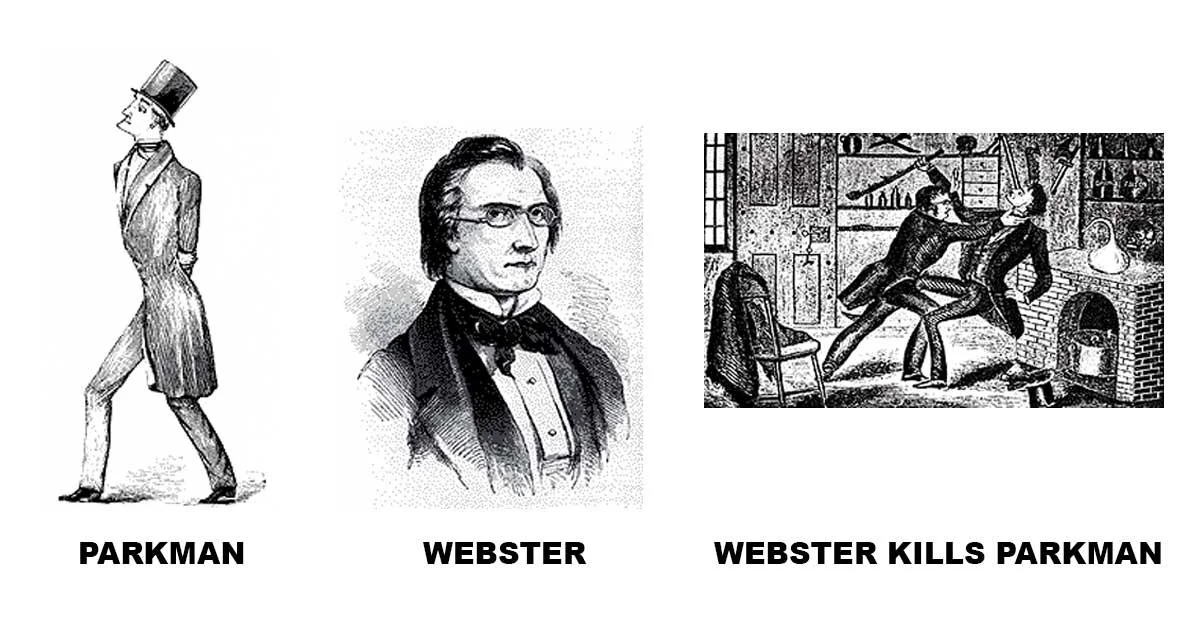The Harvard Murder that Changed Forensics - Anatomy of a True-Crime Scandal
In the chilly November of 1849, Boston was gripped by a mystery that would become one of the most sensational true crime stories of the 19th century. At the heart of this tale were two Harvard men: Dr. George Parkman, a wealthy Boston Brahmin and philanthropist, and Dr. John White Webster, a professor of chemistry at Harvard Medical School. This case, known as the Parkman-Webster Murder Case, not only shocked high society but also marked a pivotal moment in the history of forensic science.
The Parkman–Webster Murder Case
In the annals of American criminal history, few cases capture the imagination quite like the murder of George Parkman in 1849. This notorious event not only shocked Boston's high society but also set a precedent for the use of forensic science in criminal investigations. Here is the story of a case that intertwined wealth, academia, and murder, leading to one of the most sensational trials of the 19th century.
The Key Players
George Parkman - Known as "The Pedestrian," Parkman was a prominent Boston Brahmin, known for his daily walks to collect rents from his vast property holdings. His lean figure and top hat were familiar sights in Boston, where he was both respected and somewhat feared for his thriftiness and direct approach to business.
John White Webster - A lecturer at Harvard Medical College, Webster was admired for his chemistry demonstrations but was struggling financially. His debts led to a fatal confrontation with Parkman, marking him as the prime suspect in the gruesome murder.
Ephraim Littlefield - The janitor at Harvard Medical College, Littlefield played a crucial role in the investigation by discovering Parkman's dismembered remains. His actions led to a significant reward, allowing him to retire comfortably.
The Crime and Investigation
On November 23, 1849, Parkman vanished after a visit to Harvard Medical College to collect a debt from Webster. The subsequent discovery of his body parts in Webster's lab shocked the community. Ephraim Littlefield's persistence and keen observation were pivotal, as he found the remains hidden in a privy vault beneath Webster's laboratory.
The investigation was thorough, involving early forensic techniques like dental identification - a first in American legal history. Parkman's dentist, Nathan Cooley Keep, identified the victim's jawbone from among the remains, using dental molds as evidence, which was groundbreaking at the time.
The Trial
Webster's trial was a media spectacle, drawing international attention. It began in March 1850 and was characterized by the use of circumstantial evidence, character witnesses, and expert testimonies, particularly from medical professionals. Despite a defense that argued the evidence was not conclusive, the jury found Webster guilty of murder. He was sentenced to death by hanging, executed on August 30, 1850.
Aftermath and Legacy
The case left a permanent mark on legal history:
Forensic Science: It was one of the earliest instances where forensic evidence was pivotal in solving a crime, particularly through dental identification.
Public and Legal Impact: The trial highlighted class divisions and the public's fascination with crime, influencing how high-profile cases were covered in the media thereafter.
Cultural Impact: Over the years, the Parkman-Webster case has been revisited in literature, documentaries, and even a vintage crime novel, "Chopped: A Novel" by Dale Pollock, keeping the story alive in public consciousness.
Conclusion
The Parkman-Webster murder case remains a touchstone for discussions on justice, the evolution of forensic science, and the societal impact of crime. It underscores the complexities of human nature and the legal system's attempt to navigate through evidence and morality to find truth. Boston, with its rich history, still echoes with the whispers of this case, reminding us of the lengths to which desperation and deceit can drive individuals..



